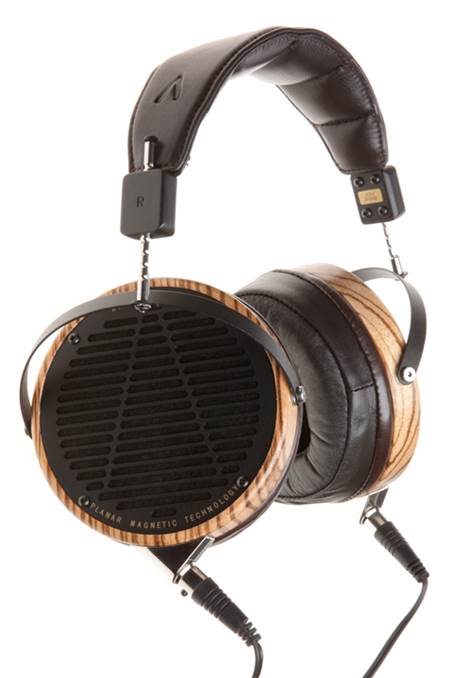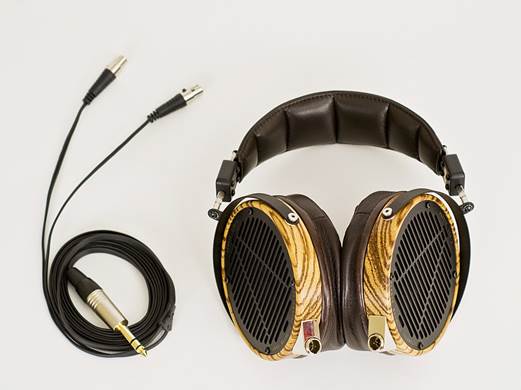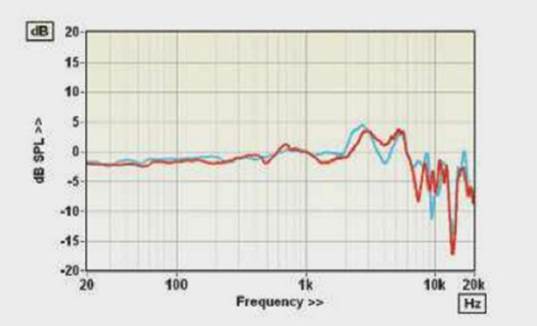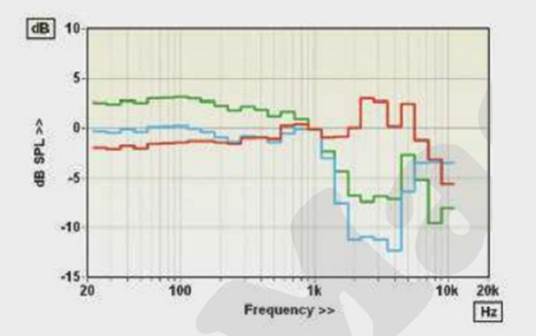Conveying the message?
There’s a natural temptation when listening
to a review product to choose items of music with which you are long familiar.
But I find that useful insights are often obtained by listening to something
new particularly, in my case, if it’s a piece of classical music that is
outside the mainstream and might be labeled as ‘difficult’. The key question
is: do I ‘get’ the music from the outset or does something about the system
sound quality make it harder going?

Planar
magnetic (isodynamic) drivers incorporate 12 neodymium magnets per capsule,
disposed to either side of a thin plastic diaphragm with a flat ‘voice coil’
So I included a recent acquisition on my
LCD-2 playlist: the first movement of Walter Piston’s String Quarter No 1,
ripped from the stereo area of BIS-SACD-1264 and converted to a 24-bit/88.2 kHz
WAV file using Korg AudioGate. This is a fairly dense piece of chamber music,
the rhythmical pulse of which is as important as the melodic line. As a result,
it benefits from an incisive sound quality and doesn’t fare so well if
instrumental attack is softened. With its smooth, polite sound quality the
LCD-2 didn’t quite connect me to this piece.
Harking back
For many British audiophiles, ‘isodynamic’
conjures up memories of a that very modern-looking headphone introduced by
Wharfedale in 1972 and recipient of a Design Council Award the following year.
Lauded as a breakthrough that combined the thin planar diaphragm of an
electrostatic driver with the simplicity and ruggedness of the ubiquitous
moving-coil alternative, Wharfedale’s Isodynamic, designed by a team lead by
John Collinson, was actually not quite the novelty it seemed. In fact the
essential elements of the isodynamic drive unit had been described in a patent
application filed by two Israeli inventors in 1958 and granted in 1961. This
was the era of Rank Organization ownership of historic names in British hi-fi,
and a badge-engineered version of the Isodynamic subsequently appeared as the
Leak 3000. But it was dull-looking by comparison.
Persuasive material
Another instance in which crisp sound
quality pays dividends is when listening to old rock recordings, which too
often are as turbid as the Thames under Waterloo Bridge. A good example is
‘Roundabout’ from Yes’s Fragile album (Elektra R9 78249), which, after Steve
Howe’s short guitar intro and the reversed piano, becomes very compressed as
soon as the rest of the band join in. Here you need a headphone with a fully
developed presence band, so the LCD-2 wasn’t able to shine a light into its
darker corners.

Standard
cable is fitted with a ¼ in jack but balanced XLR – terminated versions are
also available
No, where the LCD-2 was at its most
persuasive, for me, was on pristine modern recordings made in natural acoustics
where the music isn’t too demanding of resolving power. Emma Kirkby, for
instance, singing Robert Johnson’s touching ‘Full Fathom Five Thy Father Lies’
(a 24-bit/88.2 kHz conversion from BIS-SACD-1505) was convincingly rendered
without sibilant excess, in the large space of Lanna Church in Sweden. And the
classy jazz that is ‘I Had The Craziest Dream’, from Jimmy Cobb’s In The Key Of
Blue (24/96 download from HDtracks), was naturally balanced, generously
dimensioned and resolutely resisting spottiness in the trumpet sound.
The verdict
The LCD-2 may be a trendsetter and if so we
will be seeing high-end isodynamic headphones from other sources in the near
future. The polar opposite of marques that over-emphasis the presence band to
add ‘detail’, Audeze’s sound will appeal most to listeners who prefer a
slightly reserved presentation but can’t stomach the lower-midrange and bass
excesses that blight so many modern ’phones.
Sound quality: 7.8/10
Lab report
Audeze LCD-2
Audeze claims 91dB for 1mW sensitivity for
the LCD-2, equivalent to 103.2dB for 1V at the specified impedance of 60ohm. In
practice we measured 106.0dB at 1 kHz for 1V input, averaged for the two
capsules, which suggests that Audeze’s specification is actually rather
conservative here. Although isodynamic headphones have acquired a reputation
for being difficult to drive in this respect, note that this sensitivity is
actually higher than that achieved by some high-impedance moving-coil designs
and will cause no bother to any headphone amplifier worthy of the name.
It is a characteristic of isodynamic
drivers that they have an almost entirely resistive impedance, and so it is
with the LCD-2. We measured a minimum and maximum modulus of 58.5ohm and
58.9ohm respectively, 20Hz-20kHz, a mere 0.4ohm variation over the audible
frequency range. This means, to all intents and purposes, that the frequency
response of the LCD-2 will be largely unaffected by the output impedance of the
headphone amplifier used to drive it. A capsule matching error of  7.0dB, 40Hz to 10 kHz, is not unusually high for a headphone and
mostly reflects narrow-band disparities above 1 kHz or so, and which will not
be especially audible.
7.0dB, 40Hz to 10 kHz, is not unusually high for a headphone and
mostly reflects narrow-band disparities above 1 kHz or so, and which will not
be especially audible.

Very
flat frequency response will be retained with most headphone amplifiers thanks
to the unchanging, resistive load impedance
Sensitivity of the two capsules at 1 kHz
was matched to within 0.2dB, justifying Audeze’s claim of tight production
control – the remainder of the matching error is due to integration with the
artificial ear. Diffuse-filed correction of the frequency response suggests
that the perceived tonal balance will lack presence band energy but see the
main review text for more on this topic. Bass response is virtually flat to
below 20Hz and total harmonic distortion is vanishingly low at 90dB SPL at both
100Hz and 1 kHz.

Third-octave
freq. resp. (red + uncorrected; cyan + FF corrected; green + DF corrected)
|
Specifications
§ Sensitivity
(SPL at 1 kHz for 1Vrms input): 106.0dB
§ Impedance
modulus min/max (20Hz-20 kHz): 58.5 ohm @ 6.9 kHz – 58.9ohm @ 4.6 kHz
§ Capsule
matching (40Hz-10 kHz):  7.0dB 7.0dB
§ LF
extension (-6dB ref. 200Hz) : <20Hz
§ Distortion
100 Hz/1 kHz (for 90dB SPL): <0.01% / <0.02%
§ Weight
(inc cable and 0.25in connector): 600g
|